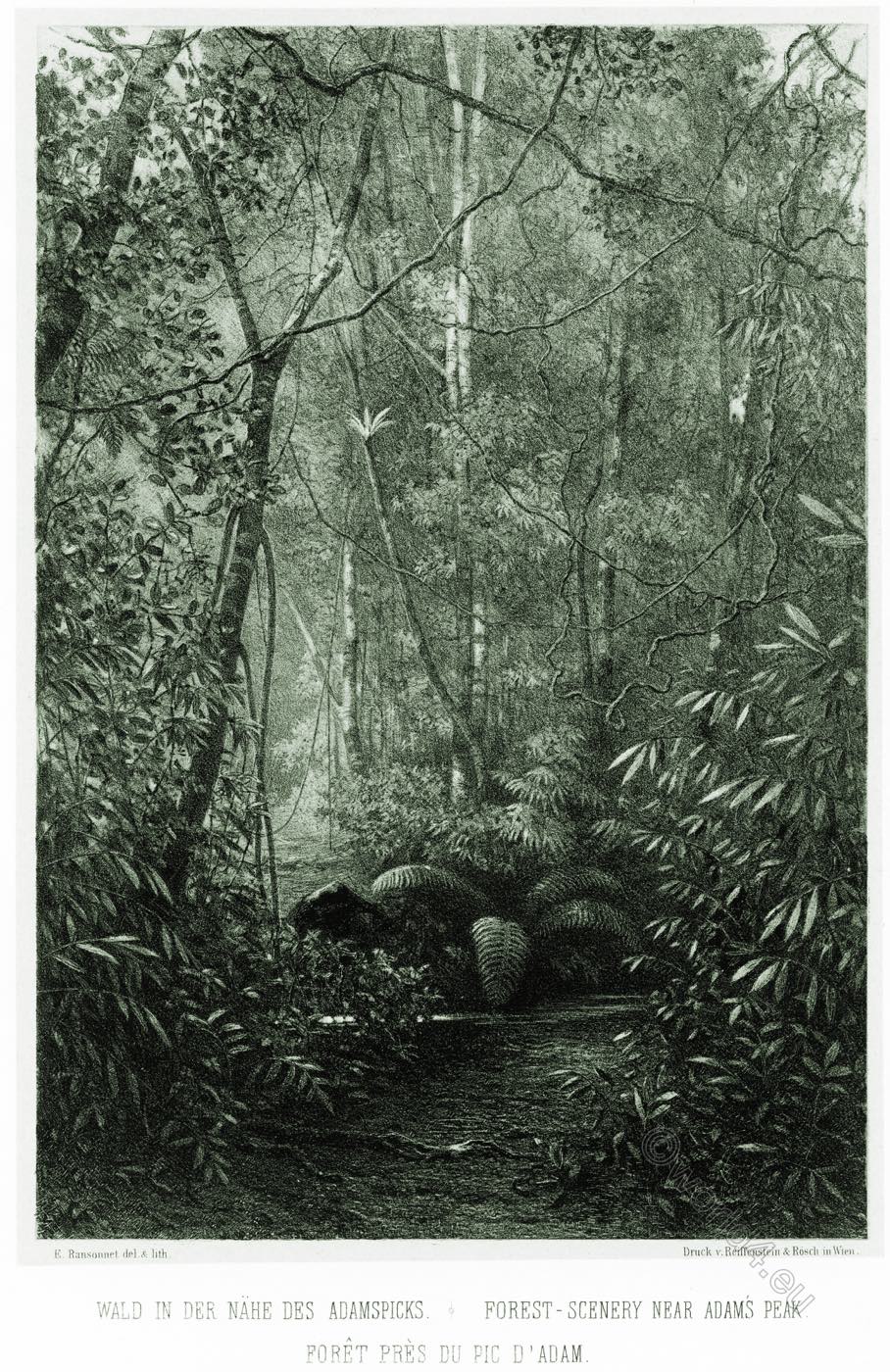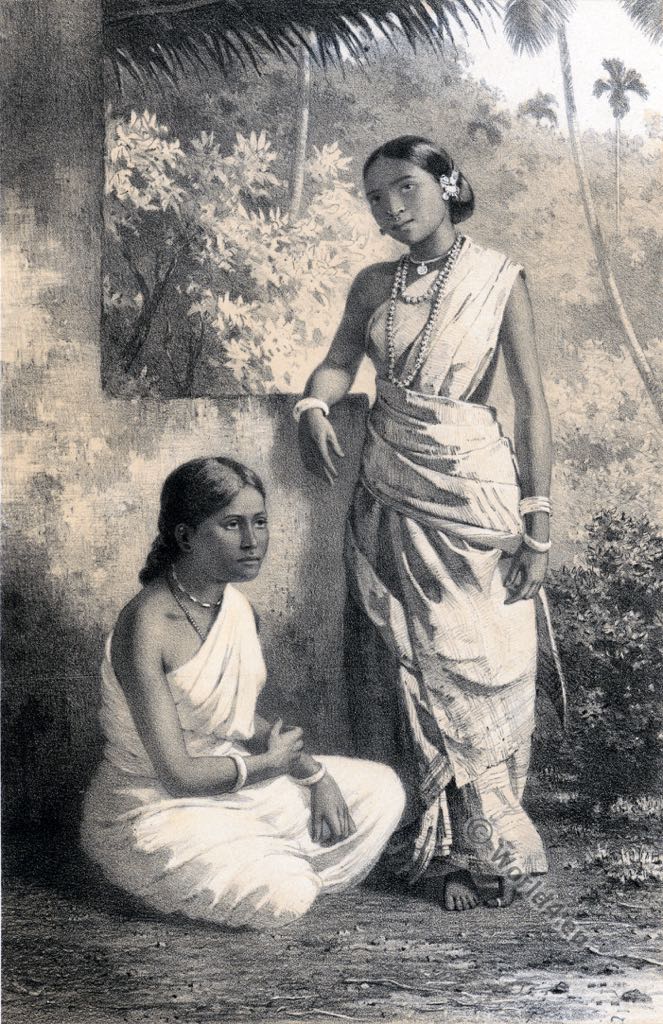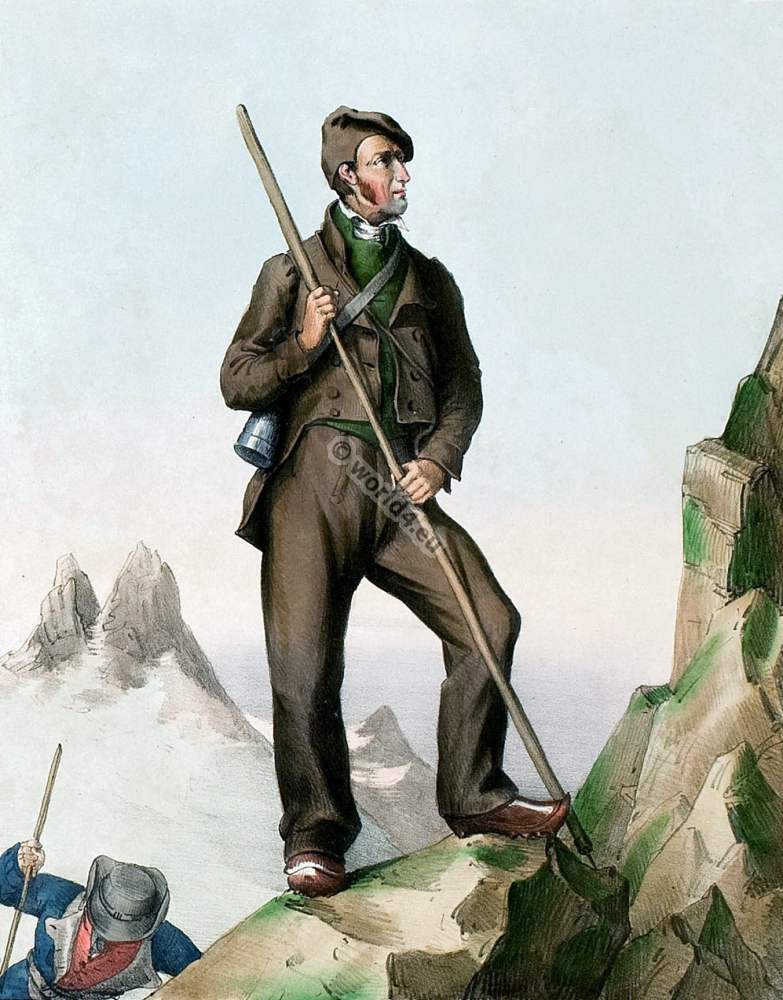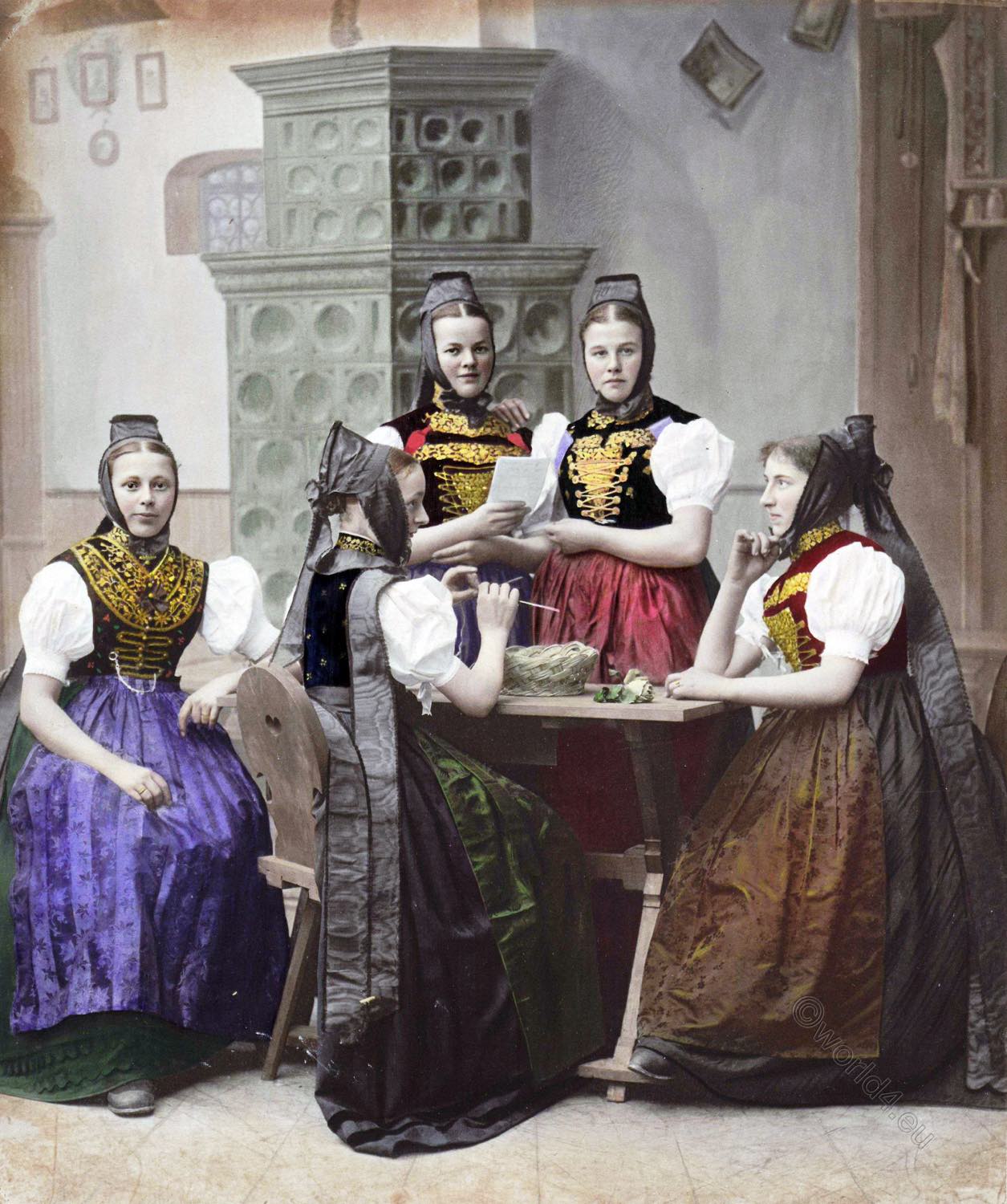PLATE XI.

Forest Scenery near Adams Peak.
Forêt près du pic d’Adam.
Ascending the steep and fatiguing mountain of Adams Peak from Pelmadulla or Ratnapura *) the traveller feels delighted when he first enters the shady forests of the higher regions. Numerous climbing plants, called jungle-ropes by the natives, hang in graceful festoons between the taller trees, while bamboos, large ferns and many other plants cover the ground with their lovely foliage.
But while the vegetable riches of nature are developed to such a degree in those forests, nothing can be more striking than the nearly complete absence of animal life and the melancholy calmness resulting therefrom. The numerous land-leeches abounding there would alone seem to interfere with the quiet reverie of the rambler and remind him that he is not allowed to intrude upon their territory without molestation and pains.
In order to enable the draughtsman to remain with impunity for a couple of hours in those forests, leech-gaiters are not a sufficient preservative. Further precautions are indispensable. The underwood must he cut down some yards around and the boots of the artist as well as the legs of his stool, have to be rubbed round with lime-juice. These magic circles soon stop the dangerous assaults of the tiny blood-thirsty creatures and induce them to begin a blocade en masse, which proofs equally unsuccessful.
*) Sabaragamuwa Province
Source: Sketches of the inhabitants, animal life and vegetation in the lowlands and high mountains of Ceylon. As well as of the submarine scenery near the coast taken from a diving bell by the Baron Eugène de Ransonnet. Printed for the author by Gerold & sold by Robert Hardwicke, London 1867.
Related
Discover more from World4 Costume Culture History
Subscribe to get the latest posts sent to your email.






